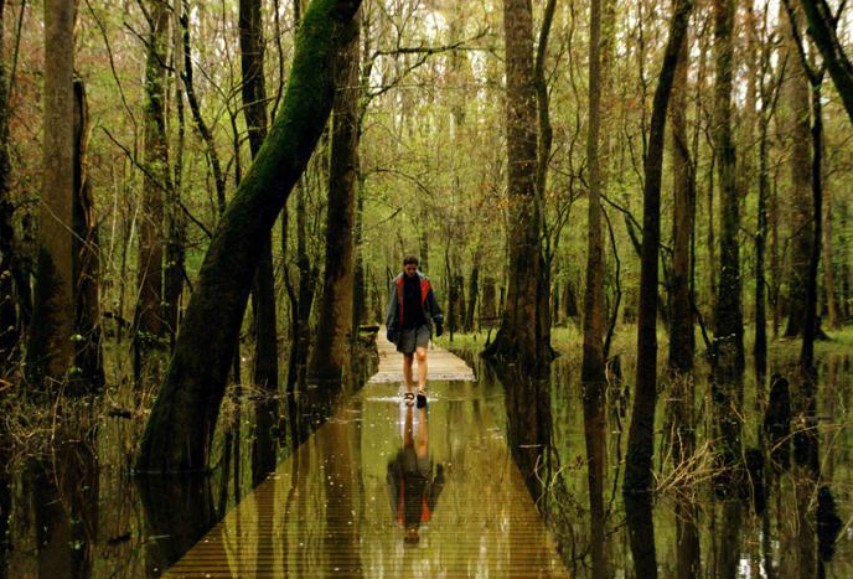Congaree National Park is no stranger to change. Over millions of years, the Congaree River has carved the landscape before us, leaving behind the oxbow lakes and sloughs we know today. The periodic flooding of the river provides soil and nutrients for our champion trees, ideal habitat for wildlife, and unique landscapes for adventuring through the park.

Courtesy of anoldent, Flickr
Congaree is a South Carolina gem, a legacy rich with natural and cultural history that has been preserved for us and future generations. The floodplain is naturally inundated with water and sediment that keep this ecosystem balanced. Natural, seasonal changes are healthy for our forest, but other changes negatively impact the ecosystem.
Increased average temperatures will have a variety of effects on the Southeast region as a whole. Congaree National Park is already experiencing impacts from increased carbon dioxide and altered timing of annual events. Climate change will continue to impact our natural and cultural resources in a variety of ways. [PDF, 1.37 MB]
- Read about how the National Park Service is addressing climate change with the Climate Change Response Program.
- See how Congaree National Park is practicing sustainability to help conserve the park.
- Learn how our region's Southeast Atlantic Landscape Conservation Cooperative is setting a course for a sustainable landscape.
- Explore our climate change resource page to learn more about climate science.
Last updated: August 3, 2015
